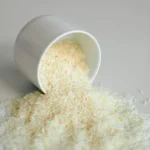What Training Should I Be Doing To Lose Weight? Looking to shed some pounds but unsure of the best training methods? Look no further! In this article, we will explore the most effective training techniques to help you achieve your weight loss goals. Whether you prefer high-intensity interval training (HIIT), weight lifting, or cardio workouts, we’ve got you covered. Say goodbye to confusion and hello to a healthier, fitter you as we dive into the world of weight loss training.
In This Article
ToggleCardiovascular Exercise
Cardiovascular exercise, also known as cardio or aerobic exercise, is a crucial component of any weight loss program. It involves engaging in activities that increase your heart rate, such as running, cycling, swimming, or dancing. By getting your heart pumping and increasing your breathing rate, cardio exercise helps burn calories and boosts your metabolism. It is an effective way to shed excess pounds and improve your overall cardiovascular health.
Types of Cardiovascular Exercise
There are numerous options for cardiovascular exercise, allowing you to choose activities that suit your preferences, fitness level, and lifestyle. Some popular types of cardio workouts include:
- Running: Running is a high-impact exercise that can be done both indoors on a treadmill or outdoors in nature. It is a great way to burn calories and improve cardiovascular endurance.
- Cycling: Whether it’s cycling outdoors or pedaling on a stationary bike, this low-impact exercise is excellent for toning your legs and improving cardiovascular fitness.
- Swimming: Swimming is a full-body workout that is gentle on the joints. It provides resistance for your muscles while being refreshing and enjoyable.
- Dancing: Dancing is a fun and energetic way to burn calories. You can choose from various dance styles, such as Zumba, hip-hop, or salsa, depending on your preference.
- Jumping rope: Jumping rope is a simple yet highly effective cardio exercise that can be done anywhere. It increases your heart rate and engages multiple muscle groups.
Recommended Duration of Cardio Exercise
To achieve weight loss benefits, it is generally recommended to engage in at least 150 minutes of moderate-intensity cardio exercise per week. This can be divided into 30 minutes, five days a week, or shorter sessions spread across the week. If you prefer vigorous-intensity activities, aim for at least 75 minutes per week. Remember, every minute of cardio exercise counts towards your weight loss journey.
Frequency of Cardio Workouts
Incorporating cardiovascular exercise into your routine on a regular basis is key to achieving weight loss goals. Ideally, aim to do cardio workouts three to five times per week. However, if you are just starting, it is perfectly fine to begin with two to three sessions per week and gradually increase frequency as your fitness level improves. It is essential to listen to your body and make adjustments to your workout routine accordingly.
Benefits of Cardio for Weight Loss
Engaging in regular cardio exercise offers numerous benefits beyond weight loss. These include:
- Increased calorie burn: Cardio workouts help create a calorie deficit, which is crucial for weight loss.
- Improved cardiovascular health: Regular cardio exercise strengthens your heart and lowers the risk of heart disease.
- Enhanced overall fitness: Cardio workouts improve endurance and stamina, allowing you to engage in everyday activities with ease.
- Mood elevation: Cardio exercise releases endorphins, the body’s feel-good hormones, promoting mental well-being and reducing stress.
- Better sleep quality: Regular physical activity, including cardio, can improve the quality of your sleep, contributing to overall health and weight management.
Remember to choose cardio activities that you enjoy to make your weight loss journey more enjoyable and sustainable. Find activities that fit into your schedule and keep you motivated, as consistency is key to achieving long-term weight loss success.

Strength Training
In addition to cardiovascular exercise, incorporating strength training into your fitness routine is essential for effective weight loss. Strength training, also known as resistance training, involves using resistance, such as your body weight or weights, to build muscle and increase overall strength. Contrary to popular belief, strength training is not only for bodybuilders or those seeking to increase muscle mass. It offers significant benefits for weight loss as well.
Types of Strength Training
Strength training encompasses a variety of exercises and techniques that target different muscle groups. Here are some examples:
- Bodyweight exercises: These exercises use your body weight as resistance, such as push-ups, squats, lunges, and planks. They can be performed anywhere without the need for equipment.
- Free weights: Using dumbbells or barbells, you can perform exercises like bicep curls, shoulder presses, and chest presses to challenge and strengthen your muscles.
- Resistance machines: Gyms often have resistance machines that isolate specific muscle groups, allowing for focused strength training. These include leg press machines, chest press machines, and cable machines.
- Resistance bands: Elastic bands with varying levels of resistance can be used to perform a wide range of exercises targeting different muscles.
- Pilates and yoga: These practices focus on bodyweight movements, balance, and flexibility while promoting strength and toning.
Recommended Frequency of Strength Training
To see optimal results in terms of weight loss and muscle development, it is recommended to engage in strength training exercises at least two to three times per week. The American College of Sports Medicine suggests that each muscle group should be trained at least two times per week with a minimum of 48 hours of rest between sessions. This interval allows the muscles to recover and adapt, leading to increased strength and toning.
Benefits of Strength Training for Weight Loss
Strength training offers several benefits that can enhance your weight loss journey:
- Increased muscle mass: Building lean muscle through strength training helps boost your metabolism, as muscle burns more calories at rest than fat. This increased metabolic rate can contribute to weight loss.
- Fat burning: Strength training can promote fat loss by increasing your body’s ability to burn calories during and after exercise.
- Improved body composition: Strength training helps sculpt your body, making it appear more toned and defined.
- Enhanced bone density: As you age, strength training becomes crucial for maintaining bone health and reducing the risk of osteoporosis.
- Increased functional strength: Strength training improves muscular strength and endurance, making daily activities such as carrying groceries or climbing stairs easier and more efficient.
- Injury prevention: Strengthening the muscles around your joints can help reduce the risk of injury and improve overall stability.
Combining Cardio and Strength Training
For optimal weight loss results, it is beneficial to combine both cardiovascular exercise and strength training in your fitness routine. Cardio helps burn calories and promotes cardiovascular health, while strength training builds lean muscle mass and increases your metabolic rate. This combination not only aids in weight loss but also enhances overall physical fitness and strength. By incorporating both types of exercise into your routine, you can achieve a balanced and effective approach to reaching your weight loss goals.
Body: In the quest for weight loss, combining strength training with cardiovascular exercises emerges as a formidable strategy. The fusion of these workouts not only accelerates calorie burning but also fosters muscle growth, which can boost your metabolism in the long run.
Strength Training: Engaging in strength training at least twice a week is essential. Not only does it aid in building lean muscle mass, which consumes more calories at rest compared to fat, but it also improves your overall strength, leading to more intense workouts.
Cardiovascular Training: Cardio exercises are a cornerstone of the weight loss training plan. Whether you opt for brisk walking, running, cycling, or swimming, these activities increase your heart rate and caloric expenditure, which is crucial for weight loss. Aim for at least 150 minutes of moderate-intensity or 75 minutes of high-intensity cardio per week.
High-Intensity Interval Training (HIIT): For those short on time, HIIT is a highly effective weight loss tool. These quick, intense bursts of exercise followed by short recovery periods keep your heart rate up and can burn more calories in less time.
Consistency and Variation: Maintaining a consistent workout schedule and varying your routines are pivotal in preventing plateaus and continuing to make progress. Incorporate different styles of training to keep your body guessing and improving.
Nutrition and Recovery: Pair your training with a balanced diet and adequate rest. Proper nutrition fuels your workouts and aids in recovery, while rest is crucial for muscle repair and growth.
Frequent Questions and Answers
-
What type of workout is best for weight loss?
- Answer: A combination of cardiovascular exercises (like running, cycling, or HIIT) and strength training is generally considered most effective for weight loss. Cardio helps you burn a lot of calories quickly, while strength training builds muscle, which can increase your resting metabolic rate over time.
-
How often should I train to lose weight?
- Answer: Most experts recommend at least 150 minutes of moderate-intensity aerobic activity or 75 minutes of vigorous activity per week, along with muscle-strengthening activities on two or more days per week. However, the exact amount can vary based on individual fitness levels, goals, and schedules.
-
Do I need to do cardio or can I just lift weights to lose weight?
- Answer: While it’s possible to lose weight with strength training alone, incorporating cardio can accelerate weight loss by increasing your caloric expenditure. It’s best to have a balanced workout plan that includes both optimal health benefits and more effective fat loss.
Related posts:
 How Much Weight Should I Use When Strength Training?
How Much Weight Should I Use When Strength Training?
 What is the appropriate calorie intake for maintaining my weight?
What is the appropriate calorie intake for maintaining my weight?
 Puravive Review Revealed: How This New Supplement Is Changing the Game in Healthy Weight Management
Puravive Review Revealed: How This New Supplement Is Changing the Game in Healthy Weight Management
 Swedish-Made Chili Burn Tablets: All-Natural Weight Management Supplement with Green Tea, Chili, and Chromium – 60 Count
Swedish-Made Chili Burn Tablets: All-Natural Weight Management Supplement with Green Tea, Chili, and Chromium – 60 Count
 When Should I Stretch & How Often?
When Should I Stretch & How Often?
 Do I Need To Work Out Every Day?
Do I Need To Work Out Every Day?







No comment yet, add your voice below!